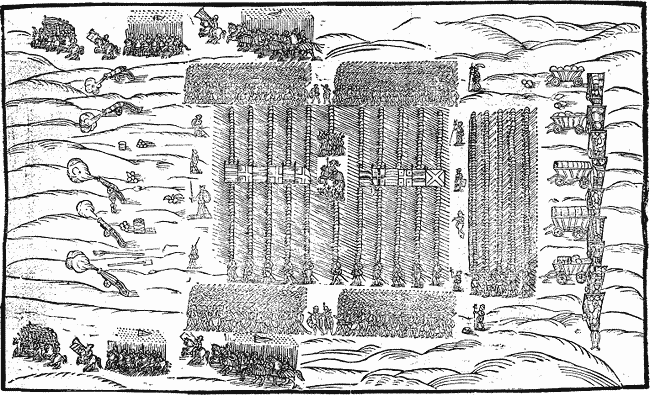 |
The Enemy Field Army |

A field army of course was the instrument for laying siege to enemy artillery forts and for subduing the countryside. From another standpoint, though, a field army was an important asset for the fortified garrisons of its side. A friendly field army in the vicinity of a besieged fort could come to its aid, not only evening the odds but making the enemy fight on two fronts. A field army appearing could break a siege.
If the besiegers elected to persist in the siege, the relieving field army for the fort could surround the enemy army, in effect, the besiegers became the besieged and another ring was set around the beleaguered fort.
Whereas the location of a fort was well known, the location and nature of the field army of the same side may not have been; a field army was like a wild card thrown into the siege game. For the leader of a besieging army, the possibility of an enemy field army coming to the relief of its fort was a serious worry. As with determining the nature of an artillery fort's defenses, reconnaissance parties, spies, prisoners and civilians became sources of little bits of information that a commander had to assemble like puzzle pieces to provide him some notion of where his enemy's field army was and what capabilities it had to relieve the fort. Some large-scale field battles of this period were set off because one side sent in a field army to lift a siege and the besieging army retaliated.
A besieged fort often held out in the hope a field army of its side would come to the rescue, even when all else seemed bleak. But should word have reached a besieged fort that no relief from a field army was just over the horizon, that in itself was enough sometimes for the defenders to call for a parley.